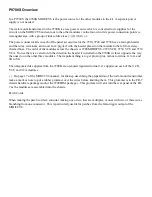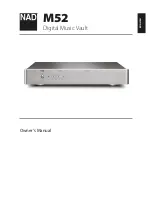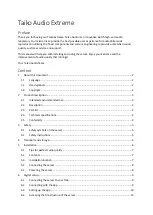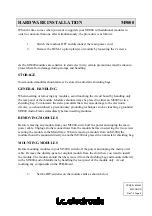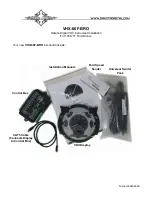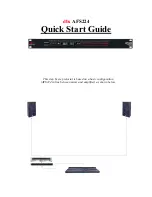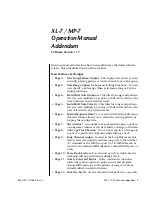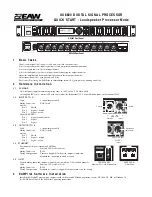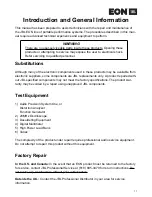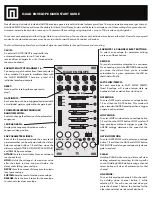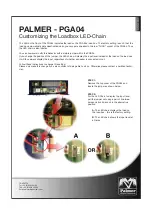
P9700S Overview
In a P9700S, the 9700K MIDI2CV8 is the power source for the other modules in the kit. A separate power
supply is not needed.
The wall-mount transformer for the 9700K is an ac power source which is converted to dc supplies for the
circuits on the MIDI2CV8 and sent out to the other modules via the four-circuit dc power connection points (a
rectangular area with a group of four solder areas (+) (G) (SG) (-).
The power connector kits in each of the panel accessories for the 9710, 9720 and 9730 have a four-pin header
and the wires, terminals, and cover for a 'pig-tail' with the header placed on the module to the left for a daisy-
chained buss. The order of the modules across the chassis is 9700 MIDI2CV8, 9720 VCO, 9730 VCF, and 9710
VCA. Notice there is a variation in the direction the header is installed on the 9700K (it faces opposite the way
the ones do on the other three modules. The important thing is to get plus to plus, minus to minus, G to G, and
SG to SG.
The unregulated dc supplies from the 9700K are on-board regulated to dual 12v supplies on each of the VCO,
VCF, and VCA modules.
( ) On page 17 of the MIDI2CV8 manual, for the step describing the preparation of the wall-mount transformer,
make a mark or note to put a rubber grommet over the wires before knotting them. This grommet is in the FR-7
chassis hardware package (and/or the 9700FRM package). This grommet will slot into the rear panel of the FR-
7 as the modules are assembled into the chassis.
Patch Cords
When making the patch cord set, consider making one or two that are multiples, or ones with two or three wires
branching from one connector. This is particularly useful for patches from the Gate-trigger output of the
MIDI2CV8.

